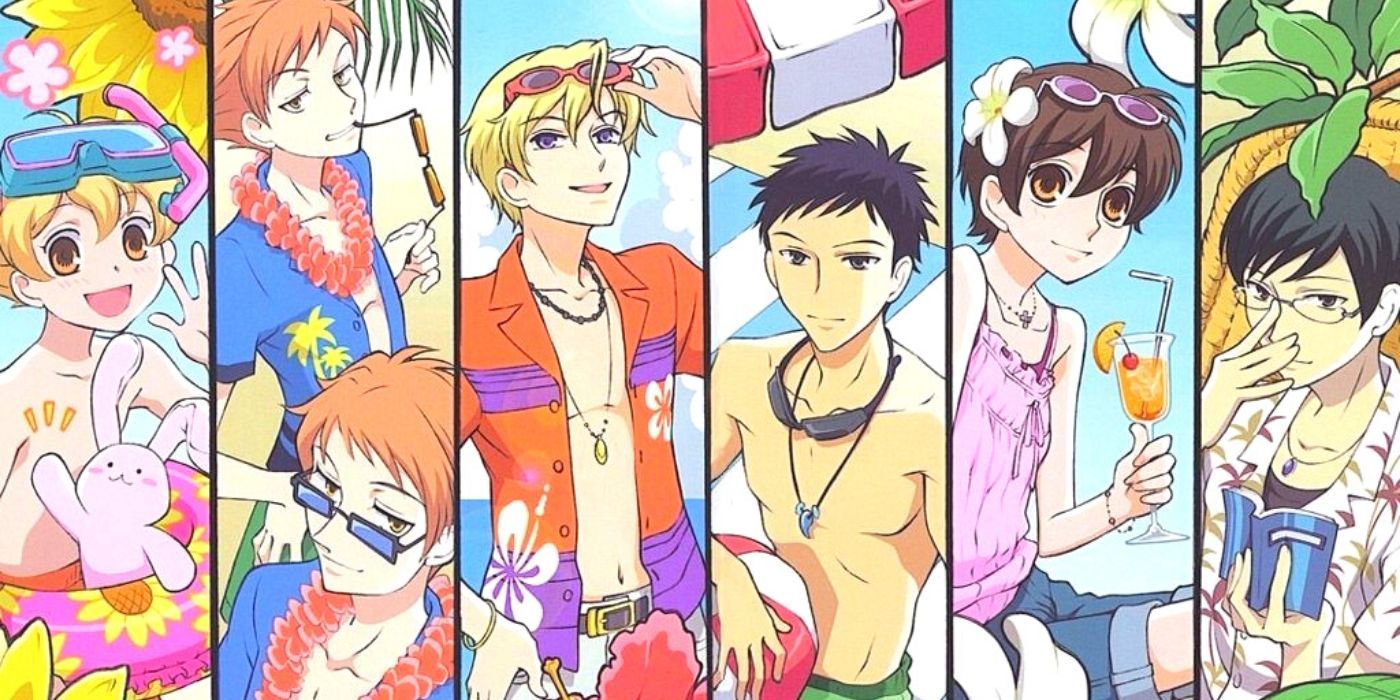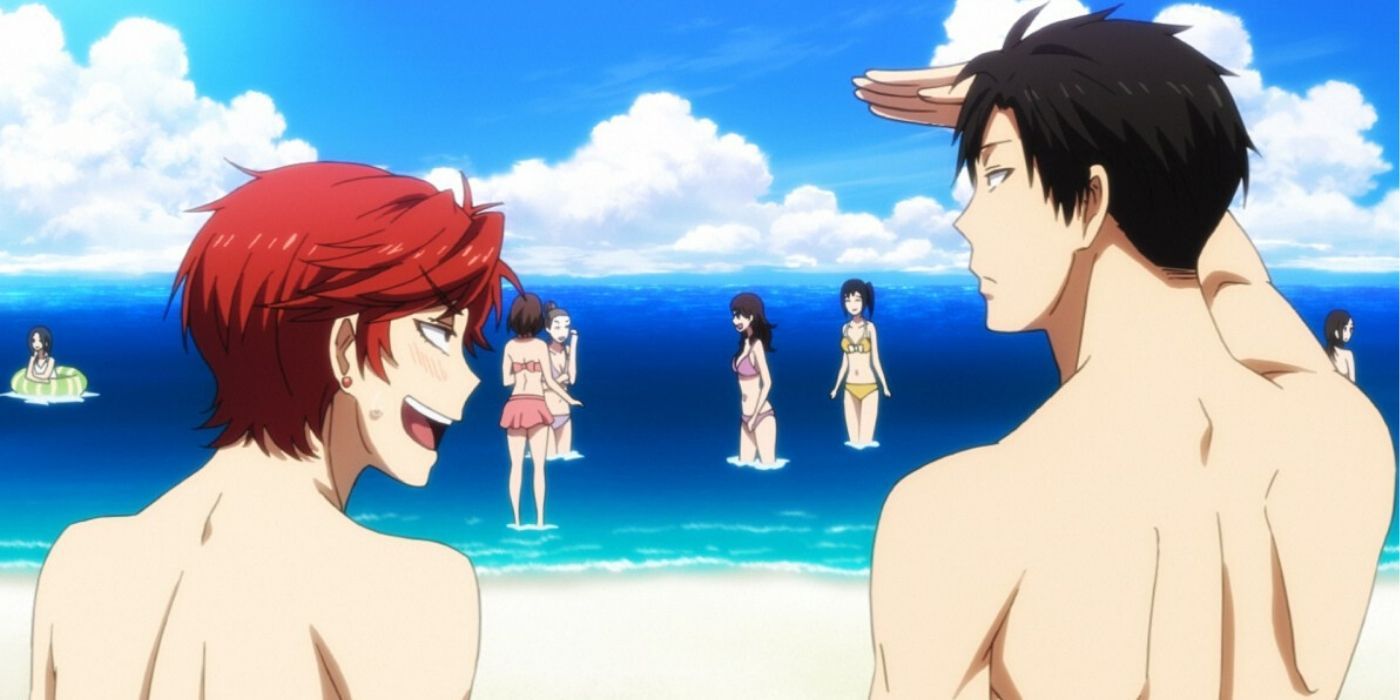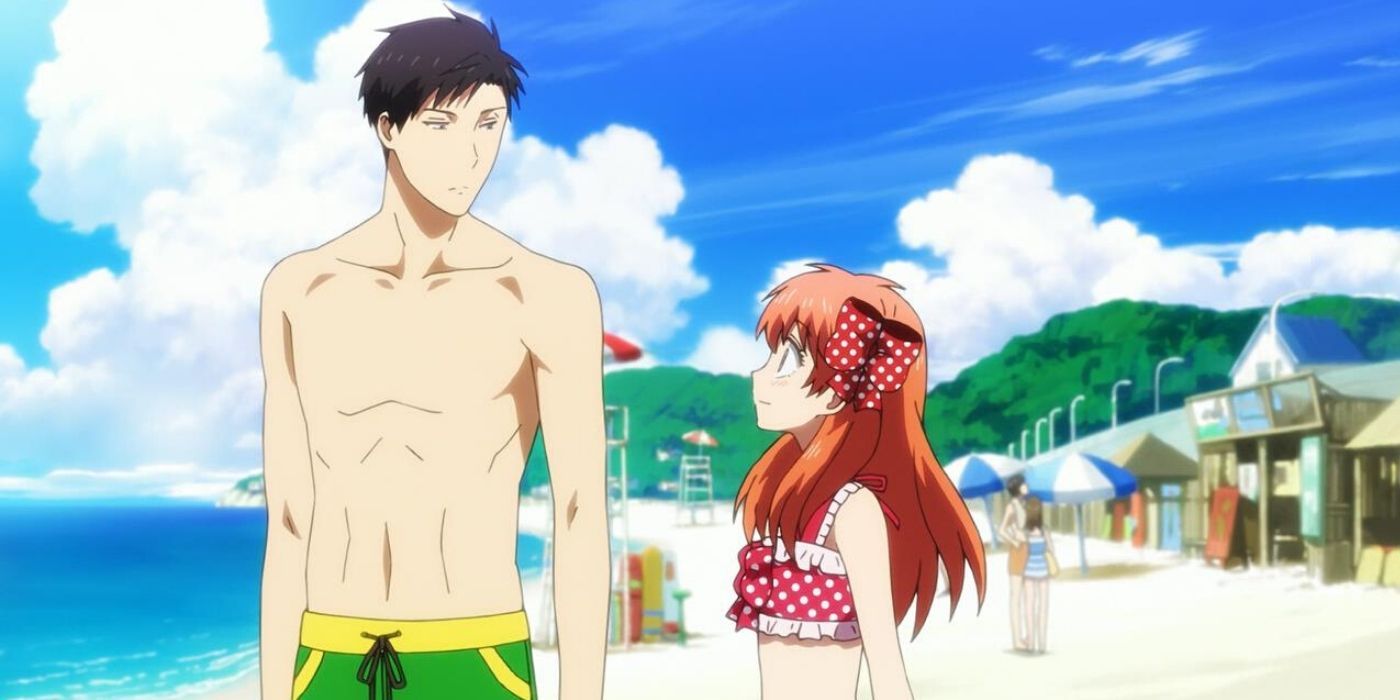Although anime is a medium filled with all kinds of stories and genres, from sci-fi and philosophical horror to romantic slice of life comedy, it’s also heavily codified and structured around well-weathered tropes that have roots in Japanese culture and tradition. One of its staples is the obligatory beach episode.
A beach episode, for those not familiar with the trope, is not just an episode that takes place on a beach (many shows have the sea as a background because Japan is basically a bunch of islands). But for an anime episode to qualify as a “beach episode” it has to firstly take place on the beach or near a large body of water, like a pool; secondly, be set in the summertime; thirdly, feature most of the ensemble cast wearing beach-appropriate attire and performing typical Japanese beach activities and, finally, it has to be set apart from the usual routine of the characters -- a mini-break for them as well as for the viewer.
One of the cultural reasons why they are so prevalent in Japanese media (not only in anime, but also in manga and dorama) is because going to the beach is a seasonal activity that the Japanese perform only during the summertime, and it falls in the same acceptable seasonal activity category as other beloved anime tropes like winter street festivals, fall Momiji (watching the red leaves) and spring cherry blossom showers.
However, the main difference between the activities above and the beach specials is that those take place during the work/school year, while the beach specials are generally framed as a total break from routine that allows the main characters to relax, the secondary characters to spend time in the sun, everyone to shed a layer of social armor, and the plot to slow down -- or even halt entirely -- with the explicit purpose of exploring emotional dynamics that might not have been at the forefront before.
Fan service is one of the other reasons why beach episodes have become a staple of any self-respecting anime, to the point that in Japan, they are known as “swimsuit episodes” (水着回). The beach setting allows the characters to show a lot of skin in an environment where it’s not perceived as particularly transgressive even by Western audience standards (one hilariously censored episode of Pokémon notwithstanding). This is extremely profitable: beach specials are announced in advance and usually, figurines, posters, and other memorabilia of the characters wearing beachwear are manufactured, promoted, and sold to fans long after they premiere.
An interesting twist on the beach episode is the scary beach episode: in Japan, the season for scary storytelling is the summer, not the fall, and many of their ghost stories have to do with water and the sea. Although in Western series the characters can also get to go to the beach for a couple of episodes, the closest equivalent would be the Halloween specials, which also include costumes that can show a lot of skin, stand-alone plotlines and the exploration of a different, more leisurely and outlandish aspect of the story and the characters.
The main cultural difference is that in beach specials, characters reveal more about themselves by shedding clothes, while in the Halloween specials, what makes the characters tick is exacerbated by the costumes they choose to wear. In one case, the social armor comes off, and in the other, they put on a mask that represents their shadow self.
With these ideas in mind, there are two shows that offer the perfect beach episodes for the anime novice: Ouran High School Host Club and Gekkan Shoujo Nozaki-kun. While these are technically romantic comedies, they actually revolve around the analysis and subversion of anime tropes and present the viewer the idealized version of a beach episode that their characters aspire to. This is contrasted with the mundane real-world act of going to the beach with friends (Nozaki-kun) and the logical consequences of trying to control nature for profit (Ouran). Nozaki-kun plays the tropes for laughs, while Ouran takes them to a slightly darker place (but not too much -- this is a comedy after all!) that fits the crime of messing with human nature and the environment.
If you want quick and dirty, Gekkan Shoujo Nozaki-kun’s are very brief and disconnected, and they offer the most modern and lighthearted takes without forgetting any gender, sexual orientation or media platform preference.
Ouran High School Host Club is only slightly more old-fashioned, but its two beach episodes actually connect with the main plot, pay off by the series' finale and kickstart three secondary character arcs, a rarity in a genre that tends to use them as fillers.
As for the perfect anime beach episode ever made, that’s up to your preferences -- but the best ones should feel like an exciting summer vacation with a slight Japanese twist, whatever that means to you. Yes, we are looking at you, Evangelion and Welcome to the N.H.K. beach episode fans, and judging your beach episode taste in silence.



